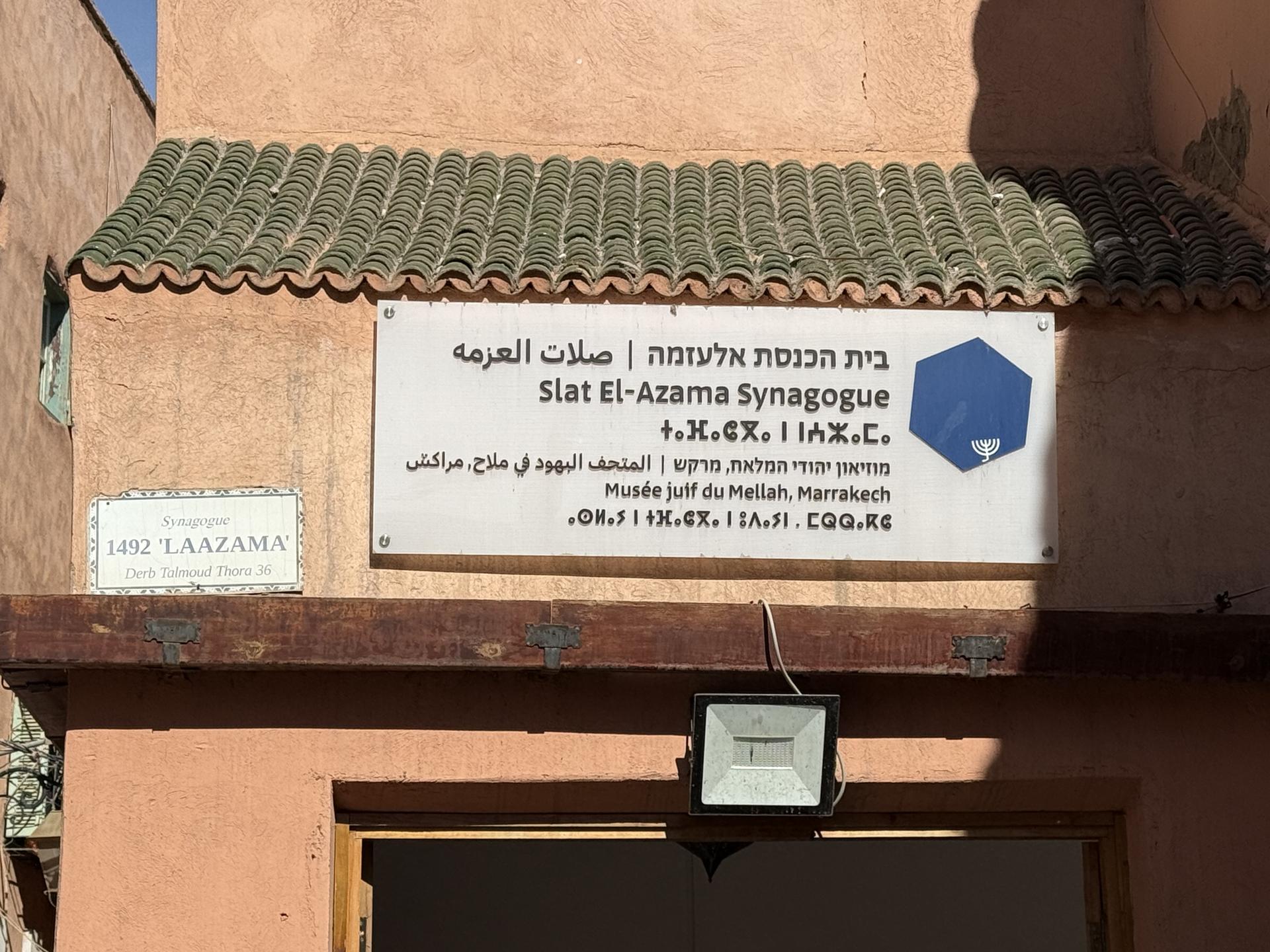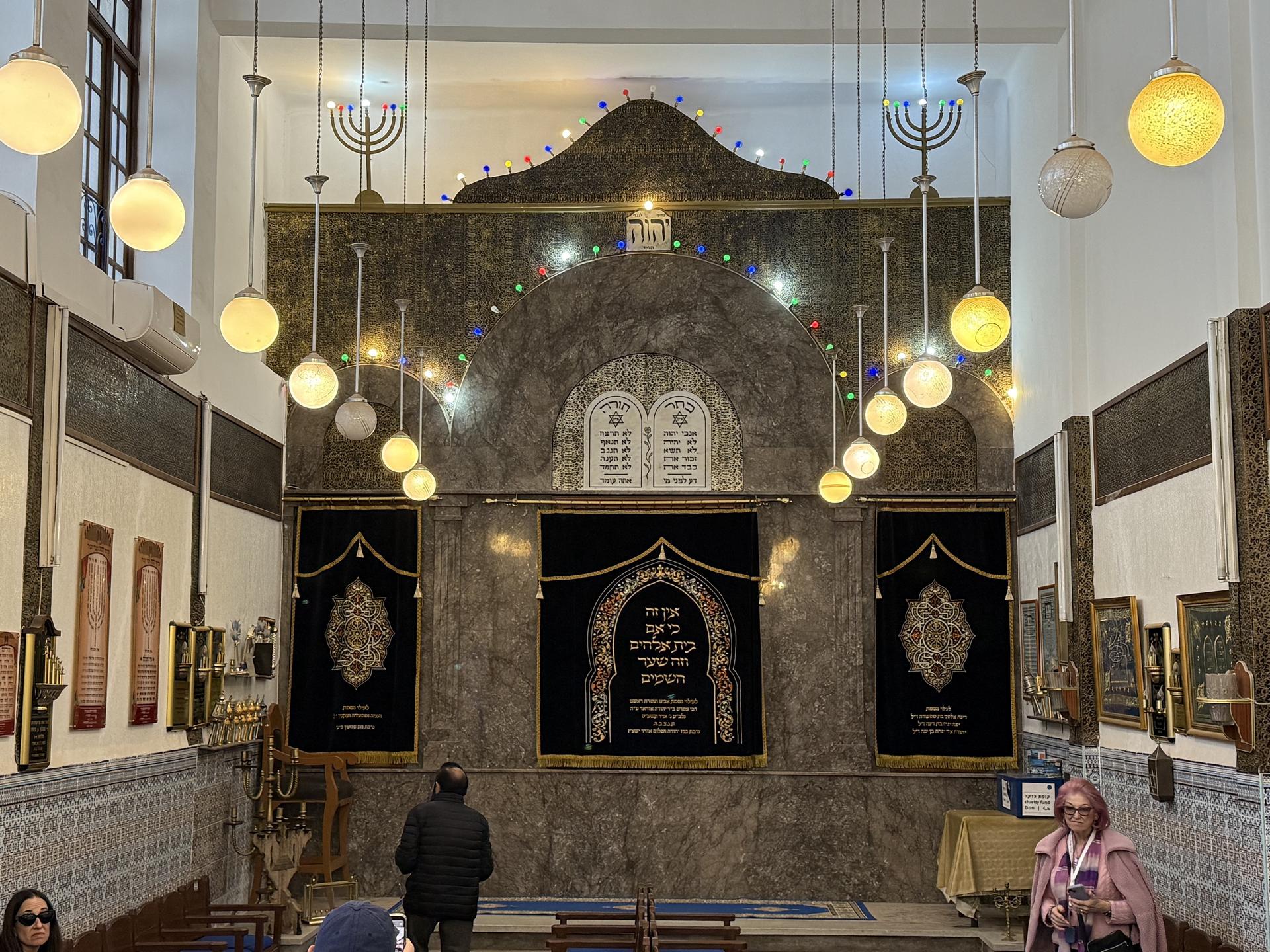Morocco—First Impressions
 I am writing this on the plane returning from our Stephen Wise Temple trip to Morocco. The experiences encountered during our Jewish journey through this amazing and even enlightening Muslim country remain fresh in our memory. Each stage of our exploration upended our expectations, deepened our knowledge, and left lasting impressions. Sitting on the literal border between the Muslim world, Africa, and the European continent, Morocco is a mélange of cultures, languages, and food, which defies easy explanation and is more often than not defined by its contrasts than its uniformity.
I am writing this on the plane returning from our Stephen Wise Temple trip to Morocco. The experiences encountered during our Jewish journey through this amazing and even enlightening Muslim country remain fresh in our memory. Each stage of our exploration upended our expectations, deepened our knowledge, and left lasting impressions. Sitting on the literal border between the Muslim world, Africa, and the European continent, Morocco is a mélange of cultures, languages, and food, which defies easy explanation and is more often than not defined by its contrasts than its uniformity.
Ostensibly a democracy with an elected legislature, the country is ultimately ruled by a dynastic monarchy that traces its lineage back to Mohammed. Though a self-declared Islamic nation, Morocco embraces and celebrates its Berber, French, and most importantly for us, Jewish identities. Walking through the streets of the Medinas (the old cities) it is easy for a Jewish traveler to recall images of the old city of Jerusalem. Scattered amid the touristy kitsch and littered alleys one can find mezzuzot, channukiyot, kiddush cups and other Jewish objects for sale—most of it manufactured by Muslim artisans. And then, after a knock, a door is opened and one enters an opulent riad (guesthouse) splendid with ornate tilework and wood carvings, central courtyards open to the sky, fountains cascading crystal clear water into tiled pools. Palaces, mansions, and villas overlook the ocean and hotels that rival the finest anywhere in the world lie behind high gates amidst elaborate gardens.
 The sidewalks are bustling with Moroccans showing the wide range of clothing styles that co-exist without a hint of intolerance. Some women walk the streets in hijabs (head covers) wearing the finest (yet modest) designer outfits, others are dressed in traditional Islamic garb; only a handful cover their faces completely. It wasn’t unusual to see a family or group of friends where one woman might be dressed in full western attire with bare shoulders and another in traditional garb. There was not a kufiyah in site, but Berber pointy-hooded robes and long Arab style masculine dresses were in evidence. Though few in number, Jews walk the streets proudly visiting the kosher markets, restaurants, and synagogues.
The sidewalks are bustling with Moroccans showing the wide range of clothing styles that co-exist without a hint of intolerance. Some women walk the streets in hijabs (head covers) wearing the finest (yet modest) designer outfits, others are dressed in traditional Islamic garb; only a handful cover their faces completely. It wasn’t unusual to see a family or group of friends where one woman might be dressed in full western attire with bare shoulders and another in traditional garb. There was not a kufiyah in site, but Berber pointy-hooded robes and long Arab style masculine dresses were in evidence. Though few in number, Jews walk the streets proudly visiting the kosher markets, restaurants, and synagogues.
The Moroccan constitution (updated in 2011) states that the country’s unity “is forged by its Arab-Islamist, Berber, and Saharan-Hassanic components, nourished and enriched by its African, Andalusian, Hebraic, and Mediterranean influences” and professes to extend equality to men and women. While many nations may assert similar principles, our journey through the land revealed that Morocco’s unique commitment to tolerance is on display from the smallest village to the largest city.
—Rabbi Ron Stern
